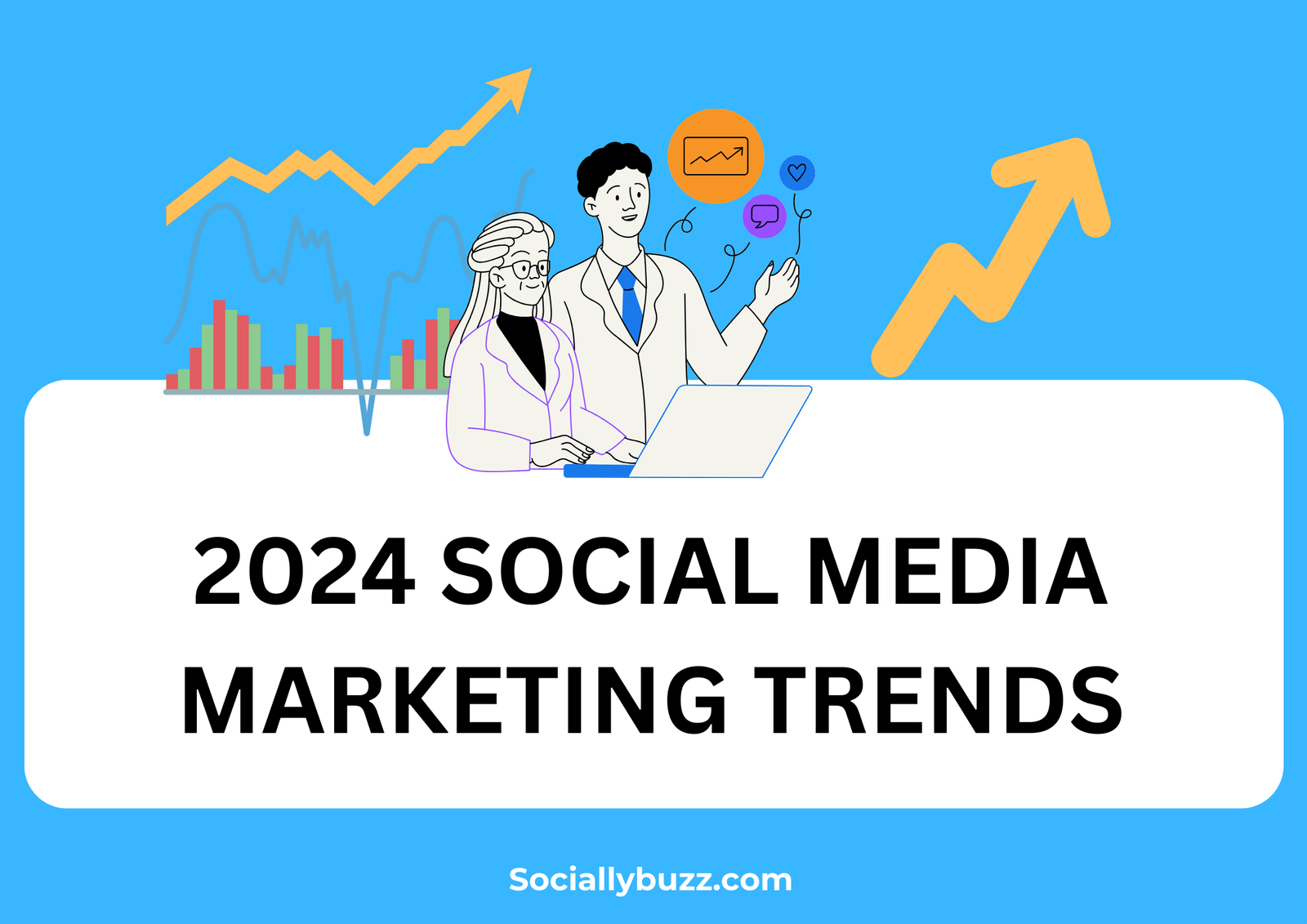Delving into the dynamic realm of media advertising trends, this introductory paragraph aims to provide a comprehensive overview that will pique the readers' interest.
From the evolution of digital platforms to the significance of personalized targeting, this discussion will shed light on the key aspects shaping the future of advertising.
Overview of Media Advertising Trends
In today's fast-paced digital world, media advertising trends are constantly evolving to keep up with changing consumer behaviors and technological advancements. It is crucial for businesses to stay updated with these trends to remain competitive in the market and effectively reach their target audience.
Key Factors Driving Changes in Media Advertising Strategies
- The Rise of Digital Platforms: With the increasing use of smartphones and social media, digital advertising has become a dominant force in the industry. Businesses are leveraging platforms like Facebook, Instagram, and Google to target specific demographics and track performance metrics in real-time.
- Personalization and Data Analytics: Consumers today expect personalized experiences, leading advertisers to utilize data analytics to gather insights on customer preferences and behavior. This data-driven approach allows for targeted messaging and more effective campaigns.
- Emergence of Influencer Marketing: Influencers have gained significant influence over consumer purchasing decisions, prompting brands to collaborate with them for authentic endorsements and product placements. This form of advertising has proven to be highly effective in reaching niche audiences.
- Shift towards Video Content: Video advertising continues to gain popularity due to its engaging and immersive nature. Platforms like YouTube and TikTok have become go-to channels for brands to showcase their products and connect with audiences through storytelling.
- Adoption of Programmatic Advertising: Automated ad buying processes through programmatic advertising have streamlined campaign management and optimization. By utilizing AI and machine learning algorithms, advertisers can target audiences with precision and efficiency.
Digital Transformation in Media Advertising
Digital transformation has completely revolutionized the landscape of media advertising, bringing about significant changes in how businesses reach their target audience.
Traditional vs. Digital Advertising Methods
Traditional advertising methods such as print ads, TV commercials, and billboards have been largely replaced by digital advertising trends due to their efficiency and effectiveness in reaching a larger audience at a lower cost.
- Digital advertising allows for precise targeting based on demographics, interests, and behavior, ensuring that ads are shown to the right people at the right time.
- Unlike traditional methods, digital advertising offers real-time performance tracking, allowing advertisers to measure the impact of their campaigns and make adjustments on the fly.
- With the rise of ad blockers and declining viewership of traditional media, digital advertising has emerged as the preferred choice for brands looking to maximize their reach.
Impact of Social Media on Advertising Strategies
Social media platforms like Facebook, Instagram, Twitter, and LinkedIn have become integral to advertising strategies, providing a direct and interactive way for brands to engage with their target audience.
- Social media allows for highly targeted advertising, enabling brands to tailor their messages to specific demographics and interests, resulting in higher engagement and conversion rates.
- Platforms like Instagram and TikTok have popularized influencer marketing, where brands collaborate with influencers to promote their products or services to a wider audience in a more authentic way.
- User-generated content on social media has also become a valuable tool for advertisers, as it allows for organic and authentic promotion of products or services through customer testimonials and reviews.
Personalization and Targeting in Media Advertising

Personalization and targeting play a crucial role in modern media advertising campaigns, allowing brands to tailor their messages to specific audiences based on demographics, interests, behaviors, and other relevant data. By delivering personalized content to the right people at the right time, advertisers can enhance engagement, increase conversions, and build stronger relationships with consumers.
Role of Personalization in Advertising
Personalization in advertising involves creating customized experiences for individual consumers, making the messages more relevant and compelling. By analyzing data such as browsing history, purchase behavior, location, and preferences, advertisers can segment their audience and deliver targeted ads that resonate with each group.
This approach not only improves the effectiveness of campaigns but also helps in building brand loyalty and trust.
- Amazon's recommendation engine is a prime example of successful personalization in advertising. By analyzing users' browsing and purchase history, Amazon recommends products that are likely to interest them, leading to increased sales and customer satisfaction.
- Spotify's personalized playlists based on users' listening habits have been highly effective in keeping users engaged on the platform and attracting new subscribers.
Ethical Considerations in Data-Driven Targeting
Data-driven targeting in advertising raises ethical concerns regarding consumer privacy, transparency, and consent. Advertisers must ensure that they are collecting and using data responsibly, respecting users' preferences, and providing clear opt-out options. Moreover, there is a fine line between personalization and intrusion, and advertisers need to strike the right balance to avoid crossing boundaries and alienating consumers.
It is essential for advertisers to be transparent about how they collect and use data for targeting purposes, and to prioritize consumer privacy and consent in their advertising strategies.
Emerging Technologies in Media Advertising

AI and machine learning, augmented reality, virtual reality, and voice search are reshaping the landscape of media advertising with their innovative capabilities and reach.
AI and Machine Learning in Advertising
AI and machine learning are revolutionizing media advertising by enabling data-driven decision-making, personalized targeting, and efficient campaign optimization. These technologies analyze vast amounts of data to predict consumer behavior, optimize ad placements, and enhance overall ad performance.
Augmented Reality and Virtual Reality in Advertising
The rise of augmented reality (AR) and virtual reality (VR) in advertising offers immersive and engaging experiences for consumers. Brands can create interactive ad campaigns that allow users to visualize products in real-time or experience virtual environments related to the product or service being advertised.
Voice Search and Advertising Strategies
Voice search is rapidly becoming a mainstream way for consumers to search for information and make purchases. As voice assistants like Siri, Alexa, and Google Assistant continue to gain popularity, advertisers are adapting their strategies to optimize content for voice search and leverage this technology to reach their target audience more effectively.
Closing Notes

In conclusion, navigating the ever-changing landscape of media advertising trends requires a keen understanding of emerging technologies and consumer behavior. Stay informed and adaptable to make the most of the evolving advertising strategies.
FAQ Resource
How important is it to stay updated with evolving trends in advertising?
Staying updated is crucial as it allows businesses to remain competitive, reach their target audience effectively, and capitalize on emerging opportunities.
What impact does social media have on advertising strategies?
Social media has revolutionized advertising by providing a platform for targeted marketing, real-time engagement with customers, and viral content sharing.
What are the ethical considerations surrounding data-driven targeting in advertising?
Ethical considerations include issues of consumer privacy, transparency in data collection, and ensuring that targeted ads are not discriminatory or misleading.
How has AI and machine learning influenced advertising trends?
AI and machine learning have enabled personalized advertising, enhanced targeting capabilities, and automated ad optimization, leading to more effective campaigns.
What is the future of voice search and its impact on advertising strategies?
Voice search is expected to grow rapidly, prompting advertisers to optimize for voice queries, create voice-activated ads, and adapt their strategies to cater to this emerging trend.







